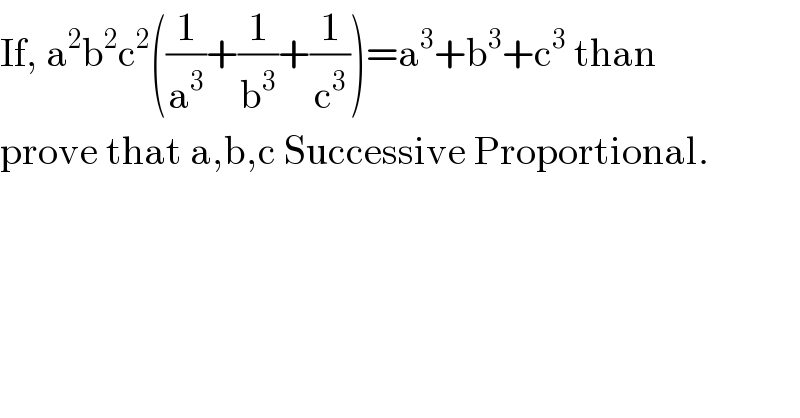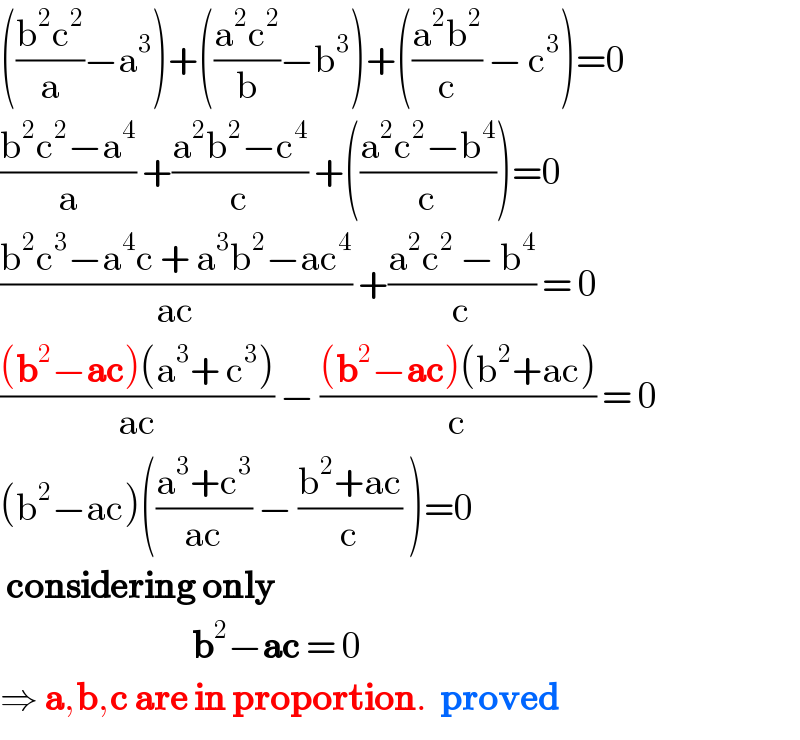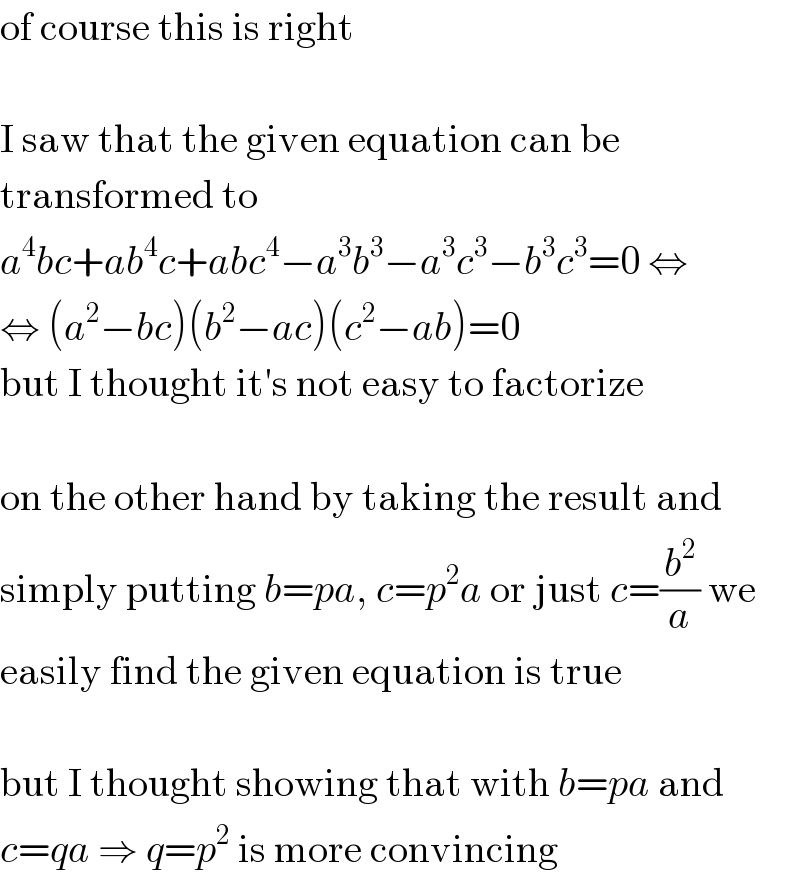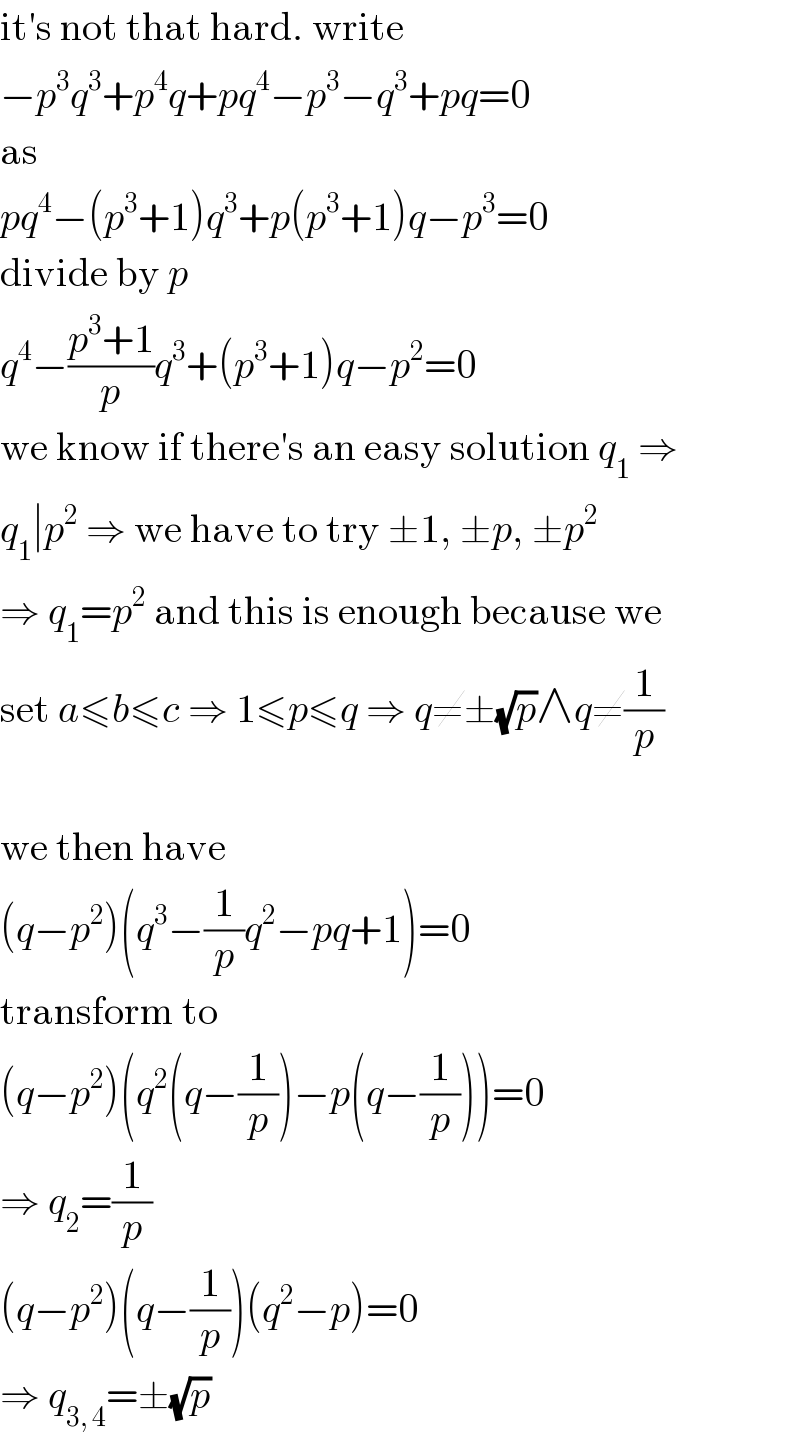
Question and Answers Forum
Question Number 70040 by Shamim last updated on 30/Sep/19

Commented by Prithwish sen last updated on 01/Oct/19

Commented by Shamim last updated on 01/Oct/19

Commented by MJS last updated on 01/Oct/19

Answered by MJS last updated on 30/Sep/19
![for a, b, c ∈R we can find p, q ∈R ⇒ b=pa∧c=qa a^2 b^2 c^2 ((1/a^3 )+(1/b^3 )+(1/c^3 ))=a^3 +b^3 +c^3 a^3 b^3 +a^3 c^3 +b^3 c^3 =a^4 bc+ab^4 c+abc^4 a^4 bc−a^3 (b^3 −c^3 )+a(b^4 c+bc^4 )−b^3 c^3 =0 b=pa∧c=qa, let a≤b≤c ⇒ 1≤p≤q a^6 (−p^3 q^3 +p^4 q+pq^4 −p^3 −q^3 +pq)=0 a≠0 −p^3 q^3 +p^4 q+pq^4 −p^3 −q^3 +pq=0 (p^2 −q)(p−q^2 )(pq−1)=0 ⇒ q=p^2 [∨q=±(√p)∨q=(1/p)] ⇒ ⟨a, b, c⟩=⟨a, pa, p^2 a⟩](Q70088.png)
Commented by Shamim last updated on 30/Sep/19

Commented by MJS last updated on 30/Sep/19

